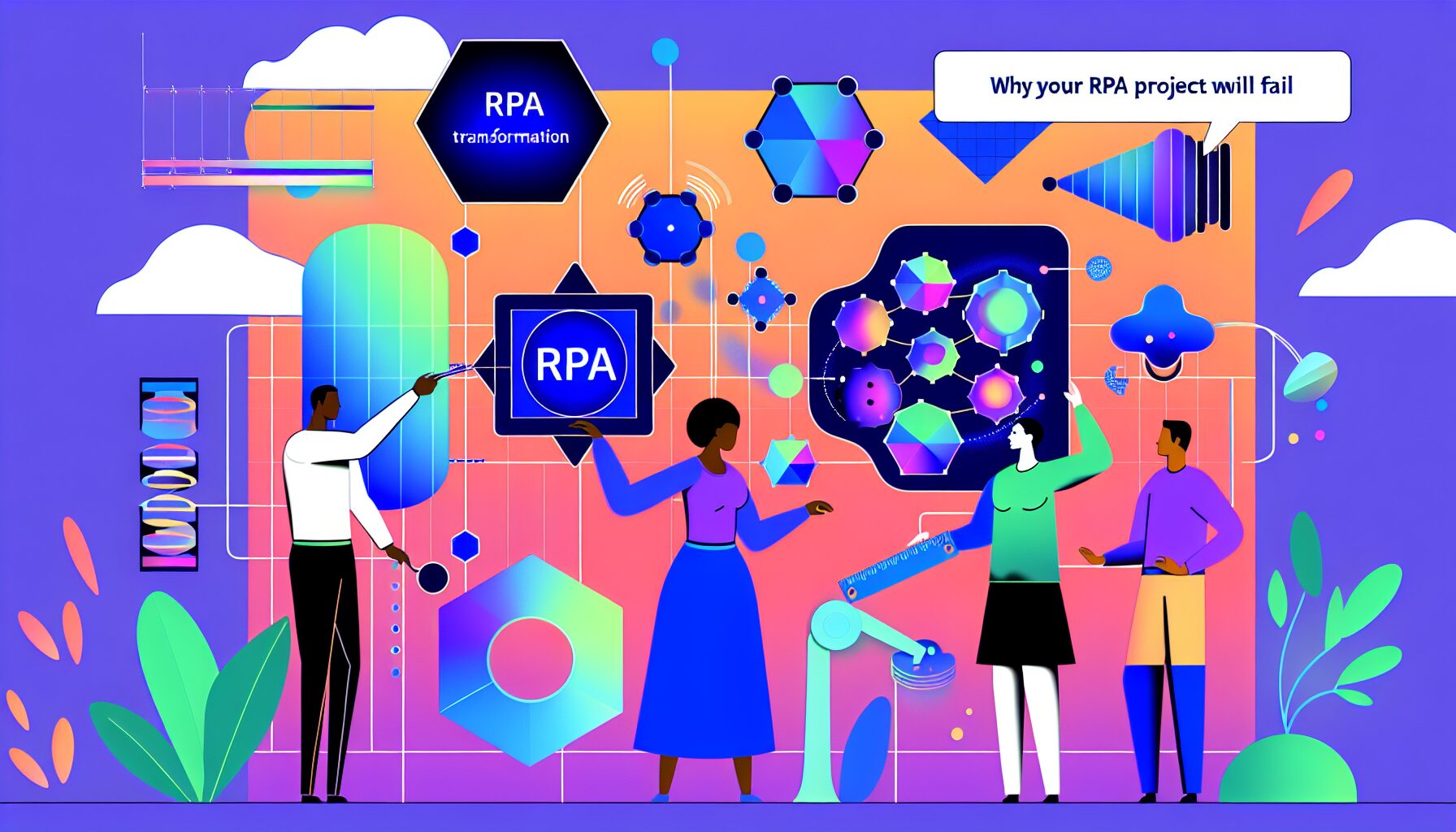Picture this: you’ve invested countless hours and a hefty chunk of your budget into an RPA project, only to watch it crumble before your eyes. It’s a nightmare scenario that far too many businesses face. But here’s the good news: by understanding the common reasons for RPA project failure, you can take proactive steps to ensure your automation journey is a resounding success.
In this article, we’ll dive deep into the top factors that derail RPA projects and, more importantly, provide you with practical strategies to overcome these hurdles. Get ready to transform your RPA initiative from a potential flop to a game-changing triumph!
Unclear Goals and Misaligned Expectations
One of the most common RPA project failure reasons is starting without a clear vision. When stakeholders have different expectations or the project lacks well-defined objectives, it’s like setting sail without a compass. To avoid this pitfall:
- Define specific, measurable goals that align with your business strategy
- Ensure all stakeholders are on the same page from the get-go
- Establish realistic timelines and milestones
- Regularly communicate progress and adjust course as needed
Choosing the Wrong Processes to Automate
Not all processes are created equal when it comes to RPA. Attempting to automate complex, unstable, or low-value tasks is a recipe for disaster. Instead:
- Focus on high-volume, rule-based processes that are stable and well-documented
- Start with simple, quick-win automations to build momentum and prove value
- Gradually tackle more complex processes as your RPA maturity grows
Underestimating the Importance of Change Management
RPA isn’t just about technology; it’s a transformative journey that impacts your entire organization. Neglecting the human side of change is a surefire way to breed resistance and skepticism. To foster a culture of automation:
- Communicate the benefits of RPA clearly and frequently
- Involve employees in the process and address their concerns head-on
- Provide training and support to help teams adapt to their new robot colleagues
- Celebrate successes and share lessons learned along the way
Skimping on Governance and Security
RPA bots are powerful tools, but without proper governance and security measures, they can quickly become liabilities. To keep your automation army in check:
- Establish clear roles, responsibilities, and access controls
- Implement robust security protocols to protect sensitive data
- Monitor bot performance and conduct regular audits
- Have a plan in place for bot maintenance and exception handling
Failing to Scale and Optimize
RPA is not a one-and-done endeavor. To truly reap the benefits, you need to continuously improve and expand your automation efforts. As you scale:
- Identify new automation opportunities based on business impact and feasibility
- Optimize existing bots to boost efficiency and reduce errors
- Invest in an RPA Center of Excellence to standardize best practices and drive innovation
- Explore advanced technologies like AI and machine learning to take your automation to the next level
By proactively addressing these common RPA project failure reasons, you’ll be well on your way to automation success. Remember, the key is to start small, think big, and never stop learning.
Ready to transform your business with the power of RPA? Start by assessing your processes, aligning stakeholders, and building a solid foundation for automation. With the right approach and a commitment to continuous improvement, you’ll be amazed at what your robot workforce can achieve!





